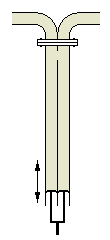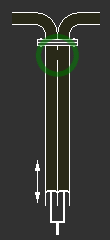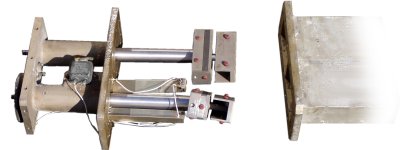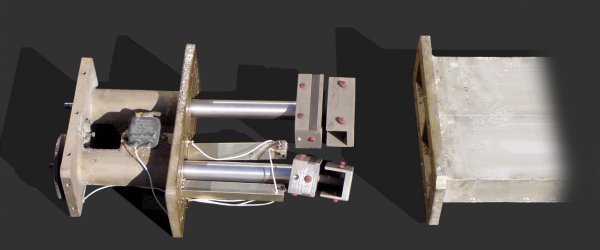Waveguide with Tunable Length


Figure 1: Principle of a waveguide with tunable length
Certainly you can visualise a waveguide, changing its length like a telescope...
...but the electric contact between the waveguide walls will be a seriously problem.
Additional the cross-sectional area of the waveguide must't changed to avoid reflections.
This would be possible in a theoretically ideal case only. This one waveguide section
will be a source of reflections definitely!
A better way is using a short-circuited waveguide and a -3dB-coupler. By the calculating of the waveguides length you must take into account the phaseshifting of 180 degrees on the occasion of the reflection at the short-circuited end of the waveguides!
Describing of the function:
- A -3 dB-coupler divides the incoming RF power in two parts;
- this one part passed the slot of the hybride take a phase-shift of 90°;
- both parts of power are reflected at the short-circuited end of the waveguide;
- the power divides in the -3 dB-hybride once again;
- this one part passed the slot of the hybride again take a phase-shift of 90°;
- among the parts in the direction of the transmitter occurs a phase-shift of 180° and these parts of power compensates among each other by destructive interference;
- both parts in the direction of the antenna have got the same phase shift and accumulate to the full power by constructive interference.

Figure 2: shorting plunger with ferrites

Figure 2: shorting plunger with ferrites
